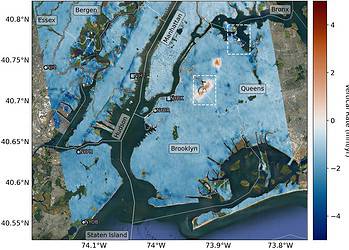
Jupiter’s iconic Great Red Spot (GRS), a huge storm that has raged for nearly two centuries, is slowly disappearing. New research suggests that this colossal vortex, swirling at speeds up to 450 km/h and as large as Earth, might be nearing its end sooner than previously thought.
A Storm Unlike Any Other
The GRS, an anticyclonic vortex (a counterclockwise-rotating high-pressure system), spans a diameter roughly equal to Earth’s. Imagine a planetary-sized hurricane; the force and scale of this storm are unheard of. It easily stands out with its reddish color against Jupiter’s pale cloud tops, easily visible even through small telescopes.
The storm’s origins, however, are shrouded in mystery. The story begins in 1665 when astronomer Giovanni Domenico Cassini documented a dark oval at the same latitude as the current GRS, naming it the ‘Permanent Spot’ (PS). This feature was observed intermittently by Cassini and other astronomers until 1713, after which it seemingly disappeared for 118 years.

In 1831, a new, similarly positioned structure was recorded by S. Schwabe, marking the possible inception of the GRS. Since that time, the GRS has been continuously observed, first through telescopes and later by space missions.
But are the GRS and the PS the same? Apparently ‘no’, according to recent research carried out by a Spanish team led by researchers at the University of the Basque Country.
Not Your Great-Grandparents’ Great Red Spot Anymore
The recent study involved analyzing historical observations and utilizing advanced simulations to trace the GRS’s development. The researchers examined the evolution of the spot’s size, shape, and movement, drawing from data spanning nearly four centuries.
One thing that has always been clear is that the GRS is shrinking. Astronomers estimate that it was once four times bigger than the Earth before quieting down. NASA has been signaling this great shrinkage for quite a while. NASA Voyager 1 and Voyager 2 flybys of Jupiter in 1979 measured the GRS to be 14,500 miles across, while a 1995 Hubble photo showed the long axis of the spot at an estimated 13,020 miles across. More recently, the rate at which it’s shrinking has accelerated. In 2012, amateur astronomers reported a shrinking rate of 580 miles per year, with the famously oval Red Spot becoming a circle.
Agustín Sánchez-Lavega, a lead physicist on the research team, explained that their findings suggest it is highly unlikely that the current GRS is the same as Cassini’s PS. The PS probably dissipated between the mid-18th and 19th centuries, meaning that the GRS is at least 190 years old but not nearly four centuries old. This means that it could fade away much quicker than previously believed. Today, the storm is about 8,700 miles across.
Moreover, observations from various missions, including the Juno spacecraft currently orbiting Jupiter, have revealed that the GRS is relatively shallow compared to its vast horizontal dimensions. At only about 500 km deep, the storm is thin compared to its diameter, raising questions about the forces that sustain such a large structure and partly explaining the trending shrinkage.
How did the GRS form?

Researchers employed numerical simulations on Spanish supercomputers, such as the BSC’s MareNostrum IV to explore how the GRS could have formed and evolved. These simulations used models to replicate the behavior of vortices in Jupiter’s atmosphere, which is dominated by intense wind currents that flow along latitudinal lines. These winds, blowing in opposite directions on either side of the GRS, create a significant north-south wind shear, which is a key factor in the storm’s development.
The simulations tested several hypotheses for the GRS’s origin. One theory proposed that a massive superstorm, similar to those observed on Saturn, might have triggered the formation. Another hypothesis suggested that multiple smaller vortices, generated by the intense wind shear, could have merged to create the GRS. However, neither scenario fully replicated the current storm’s unique characteristics.
“We also think that if one of these unusual phenomena had occurred, it or its consequences in the atmosphere must have been observed and reported by the astronomers at the time,” said Sánchez-Lavega.
The most promising model involved a known instability in Jupiter’s atmospheric winds, capable of generating elongated cells that could enclose and trap the winds. These proto-cells, or proto-GRS formations, could shrink and stabilize over time, evolving into the compact, rapidly rotating GRS seen today. This theory aligns with observations of other major vortices on Jupiter and offers a compelling explanation for the storm’s initial formation and subsequent behavior.
Looking to the Future: What’s Next for the Great Red Spot?
The research team’s simulations revealed that these elongated proto-cells are stable when they rotate around the periphery of the GRS at the speed of Jupiter’s winds. If the rotational speed of the proto-GRS is lower than that of the surrounding winds, the structure may break apart, preventing a stable vortex from forming. Conversely, if the rotational speed is too high, the proto-GRS would develop properties distinct from the current GRS.
Future research aims to further investigate the physical mechanisms that sustain the GRS over time and to predict its potential fate. Scientists hope to understand whether the GRS will continue to shrink and eventually disintegrate, as some models suggest, or if it will stabilize at a smaller size, potentially persisting for many more years. This work may also provide insights into the dynamics of other large-scale vortices, both on Jupiter and across the Solar System.
As scientists continue to study Jupiter’s Great Red Spot, new discoveries could reshape our understanding of the planet’s atmospheric dynamics and the processes that drive these colossal storms.
The fate of the GRS remains uncertain, but the ongoing research offers hope that we may soon unravel the mysteries of this iconic feature of our Solar System. And if astronomical history is any indication, it’s likely that even if the GRS fades, another colossal storm will be ready to take its place.
The findings appeared in the journal Geophysical Research Letters.






